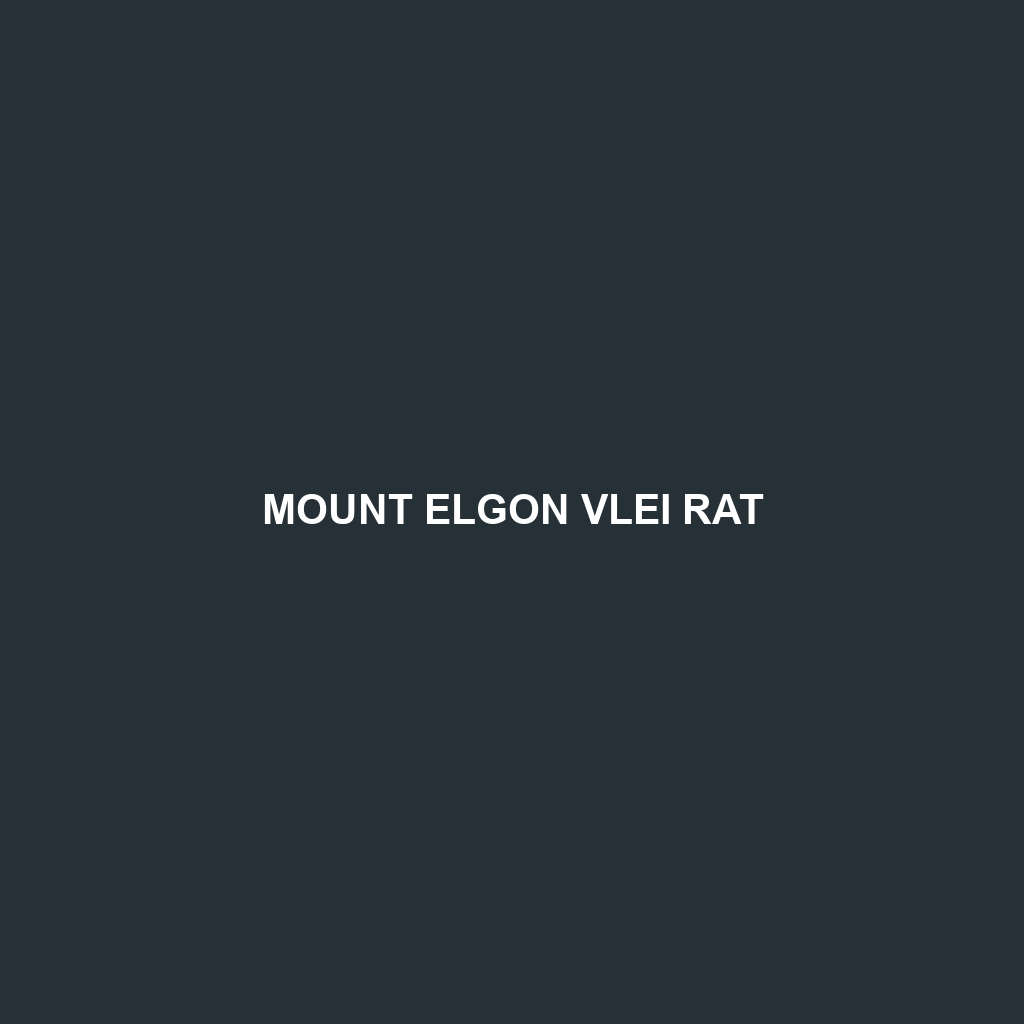Mount Elgon Vlei Rat
Common Name: Mount Elgon Vlei Rat
Scientific Name:
Habitat
The Mount Elgon Vlei Rat is primarily found in the montane grasslands and wetlands of the Mount Elgon region, which straddles the border between Uganda and Kenya. These rodents thrive in high-altitude areas where they inhabit marshy areas, tall grasses, and scrublands, making them adept at living in moist, grassy ecosystems that provide ample cover and food resources.
Physical Characteristics
Mount Elgon Vlei Rats are small to medium-sized rodents, typically measuring about 15-25 cm in body length, with bushy tails that are slightly shorter than their body length. Their pelage is predominantly grayish-brown, with a lighter underbelly that aids in camouflage within their grassy habitat. Distinctive features include large, rounded ears and prominent whiskers, which enhance their sensory perception.
Behavior
These rats are primarily nocturnal, becoming active at night to forage for food and avoid daytime predators. Mount Elgon Vlei Rats are social creatures, often found in small family groups. They are known for their burrowing behavior, constructing complex tunnel systems that provide shelter and protection. Their alarm calls and communication methods are crucial for maintaining group cohesion.
Diet
The diet of the Mount Elgon Vlei Rat mainly consists of grass seeds, roots, and leaves. They are herbivorous and opportunistic feeders, often consuming whatever green material is available in their habitat. Their foraging habits contribute significantly to seed dispersal within the ecosystem.
Reproduction
Mount Elgon Vlei Rats typically breed year-round, with peak breeding seasons occurring during the wet months. Females usually give birth to 3-6 offspring after a gestation period of approximately 24-28 days. The young are altricial, meaning they are born undeveloped and rely heavily on parental care for survival in their early stages.
Conservation Status
The Mount Elgon Vlei Rat is currently listed as vulnerable due to habitat loss and degradation resulting from agricultural expansion and climate change. Conservation efforts are essential to protect their natural habitats and ensure the survival of this unique rodent.
Interesting Facts
An intriguing fact about the Mount Elgon Vlei Rat is its role as a bioindicator for the health of montane ecosystems. Their presence and population dynamics can provide insights into environmental changes affecting their habitat. Additionally, they are a key prey species for various predators, including birds of prey and small carnivores.
Role in Ecosystem
The Mount Elgon Vlei Rat plays an essential role in its ecosystem by aiding in plant propagation through seed dispersion. Their activity in the soil also helps aerate it, promoting nutrient cycling. As a prey species, they significantly contribute to the food web, supporting the survival of various predators within the Mount Elgon region.
